Social Media Resources
Visit the Healthy Soils Week website to see the full lineup of events and partners. To follow along on social media, watch for and use the hashtags #SoilHealth.
Among the many benefits of soil health practices are the following:
- Improved plant health and yields;
- Increased water infiltration and retention;
- Sequestered carbon and reduced greenhouse gases (GHGs);
- Reduced sediment erosion and dust;
- Improved water and air quality; and
- Improved biological diversity and wildlife habitat.
Here is a selection of suggested points for your social media posts.
- Climate change is negatively impacting the health of our lands. Well-managed and healthy soils can sequester atmospheric CO2 and store it as biomass.
- Soil moisture plays a critical role in the carbon cycle and liveliness of our crops, whole ecosystems, not just below-ground ecosystems. Healthy soil affects how much water our soil can hold, and how water moves through the soil.
- Improving soil health can help break the "feedback loop" - where increased droughts reduces soil moisture, leading to reduced soil organic matter, soil productivity and carbon uptake, and increased GHG emissions.
- CDFA’s Healthy Soils program provides incentives to farmers and ranchers to improve soil health and make agriculture systems more resilient to climate change.
- Healthy soils practices are crucial for drought and climate change resilience - building soil carbon increases water holding capacity, which improves biodiversity in the belowground.
- Healthy soils practices increase statewide implementation of conservation management practices that improve soil health.
- CDFA is helping farmers and ranchers adopt healthy soils practices that sequester carbon and reduce atmospheric greenhouse gases.
- Healthy soils practices reduce atmospheric GHGs and improve soil health.
- CDFA's Healthy Soils program has awarded nearly $105 million in grants so far for 1,525 different projects.
- CDFA Healthy Soils Program projects sequester 358,589 metric tons of CO2 equivalent each year. That’s like removing nearly 77,265 cars from the road each year.
Partners
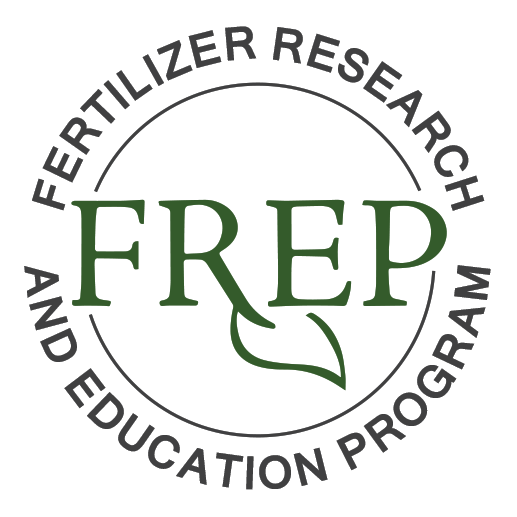 CDFA's Fertilizer Research and Education Program (FREP) funds and facilitates research to advance the environmentally safe and agronomically sound use and handling of fertilizing materials.
CDFA's Fertilizer Research and Education Program (FREP) funds and facilitates research to advance the environmentally safe and agronomically sound use and handling of fertilizing materials.

The USDA Natural Resources Conservation Service has provided leadership in a partnership effort to help America's private landowners and managers conserve their soil, water, air, plants, and other natural resources since 1935. For more information about NRCS in California, please visit the NRCS website.
Community Alliance with Family Farmers (CAFF) conducts on-farm research, facilitates farmer-to-farmer learning, and provides technical assistance for a variety of climate smart farming practices. Check out the latest case study on cover crops in orchards.
The California Foundation for Agriculture in the Classroom is a nonprofit organization dedicated to educating youth throughout California about the importance of agriculture in their daily lives.
CalRecycle's mission is to protect the environment and preserve natural resources by promoting and supporting the highest levels of waste reduction, recycling, and reuse.
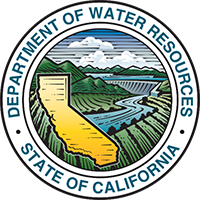
The Department of Water Resources manages California's water resources, systems, and infrastructure, including the State Water Project (SWP), in a responsible, sustainable way.
University of California Agriculture and Natural Resources (UCANR) brings UC information and practices to all 58 California counties. Through research and Cooperative Extension in agriculture, natural resources, nutrition, economic and youth development, our mission is to improve the lives of all Californians. Learn more at the UCANR website.
The National Center for Appropriate Technology (NCAT) facilitates meaningful connections among sustainable agriculture producers, renewable energy experts, innovators, researchers, and industry professionals. Learn more at the NCAT website.
Sustainable Conservation advances the collaborative stewardship of California's land, air, and water for the benefit of nature and people. The organization launched its Solutions in Our Soil program in 2023 to explore how improving the state's soil health can address community, agricultural, and environmental water challenges.
Infographics
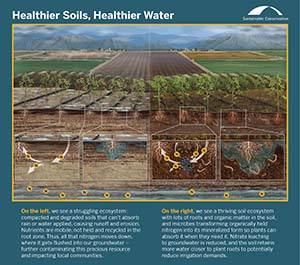
Healthier Soils, Healthier Water
Enlarge or print this infographic highlighting the connection between soil and water.
Illustration: SayoStudio.
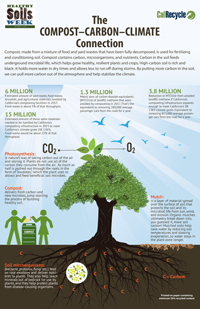
Healthier Soils, The Compost-Carbon-Climate Connection
Enlarge or print this infographic explaining the connection between compost, carbon and the climate.
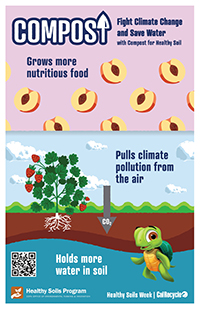
Compost for Healthy Soil
Enlarge or print this infographic explaining why compost for healthy soil.




